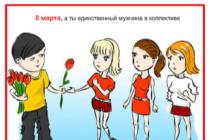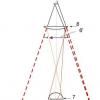"Taxes and taxation", N 1, 2005
Transfer pricing is understood as the sale of goods or services within a group of related parties at prices different from market prices. The goals for this may be different.
First, transfer pricing is an important mechanism for the redistribution of financial resources within integrated structures (holdings). Thus, a production or mining company of a holding may sell products to a sales company of the same holding at domestic (low) prices; the sales company then sells the product to end consumers at market (higher) prices. As a result financial resources are concentrated in a single profit center (sales company) and then can be redistributed in accordance with the needs of the holding as a whole.
Second, transfer pricing can be used to minimize taxation. If the profit center (sales company in the example) enjoys certain tax benefits, the overall tax burden on the holding as a whole is reduced.
From the state's point of view, the first of these transfer pricing functions can be assessed as neutral. Obstruct holdings in their redistribution own funds It would be illogical and even economically harmful. On the other hand, minimization of taxation, even within the framework of the law, from the standpoint of the tax authorities is an activity that is obviously suspicious and requires suppression.
The current version of Article 40 of the Tax Code of the Russian Federation is a kind of compromise. On the one hand, it does not prohibit transfer pricing transactions as such and, accordingly, gives holdings a certain freedom of maneuver in setting domestic prices, but, on the other hand, limits the tax efficiency of the transfer pricing method (permissible deviation of prices from market prices is no more than 20%, otherwise, taxes are recalculated based on market prices). The tax authorities are allowed to initiate price verification only in certain cases (interdependence of the parties to the transaction, significant fluctuations in the prices of the taxpayer's transactions, etc.). This ideology is generally consistent with international "anti-transfer" practice.
The current version of Article 40 of the Tax Code of the Russian Federation allows holding companies to bypass its restrictions when redistributing funds without any problems. In the above example, for this it is enough just to exclude the direct interdependence between the marketing and production organizations, and also to exclude the direct sale of goods by the producing organization to end consumers (at prices other than domestic ones). It is clear that in this case, transaction prices will not experience significant changes over short periods of time. In addition, it is useful to have some business case internal prices (marketing calculations, etc.). From the point of view of the law, however, this does not matter, but it can help in communicating with tax officials.
Currently, litigation under Article 40 of the Tax Code of the Russian Federation is rather exotic. The point, apparently, is that the law places the proof of the discrepancy between prices and the market level on the tax authority, with which the latter usually has big problems. The only exceptions are the most egregious cases (understatement of the transaction price at times).
We also note that the law (Article 20 of the Tax Code of the Russian Federation) establishes a rather limited list of grounds for interdependence (participation of one organization in the capital of another, official subordination of one individual another, family relationship), but at the same time gives the court the opportunity to recognize persons as interdependent on other grounds. In view of this, the court can easily recognize the interdependence, for example, of a company and its director, who bought several dozen apartments from the company four times cheaper than the market value<*>.
<*>Cm.: Information mail Presidium of the Supreme Arbitration Court of the Russian Federation dated March 17, 2003 N 71.
As it became known, the Government of the Russian Federation is currently preparing amendments to Article 40 of the Tax Code of the Russian Federation. Details are still unknown. One thing is certain: they will not be favorable for the taxpayer. In the best case, the matter will be limited to expanding the list of "interdependent persons" to whom the price control procedure can be applied, as well as placing the burden of proving the "market" prices on the taxpayer himself. In the worst case, the new version may make transfer pricing completely impossible within the holdings, which would be extremely unpleasant for the latter: the products will have to be sold to the warehouse of their own marketing division only at market prices.
It can be assumed that the planned amendments are a kind of government reaction to the Yukos case. Let me remind you that the main claims brought against the company itself (not its shareholders!) come down to its use (in 2000-2001) of transfer pricing schemes to minimize taxes. However, at the same time, there were no references to Article 40 of the Tax Code of the Russian Federation in the judicial argumentation of the Ministry of Taxation<**>.
<**>Solution Arbitration Court of Moscow dated May 26, 2004 in case N A40-17669 / 04-109-241; Resolution of the Appellate Instance of the Moscow Arbitration Court in case No. A40-17669/04-109-241 dated June 29, 2004
The fact is that the scheme used by the company does not violate the provisions of Article 40. As a result, the court ruled (not in favor of Yukos, as it is known) based, in essence, not on any provisions of the Tax Code, but on the thesis of "bad faith of the taxpayer", and in an extremely dubious interpretation. From the fact of bad faith (in the opinion of the author, not proven), the court made extremely far-reaching (in the opinion of the author, weakly legally justified) conclusions, including a total review of the civil law consequences of transactions and even the actual cancellation of the limitation period<***>. Perhaps it was the awareness of the legal precariousness of such a position that led the state authorities to the idea of revising Article 40 of the Tax Code of the Russian Federation in order to expand the scope of its applicability.
<***>Budylin S.L. Taxpayer dishonesty - legal concept or...? // Taxes and taxation. 2004. oct. pp. 37 - 40.
However, to a large extent, it is "fist-waving after a fight." The use of transfer pricing to minimize taxation involves the redistribution of income in favor of the least taxable elements of the group. Yukos (and not only it) used as these elements the so-called "internal offshores", that is, organizations with low taxation, registered under the legislation in force at that time in various regions of the Russian Federation. Since then, however, the situation has changed radically: after the entry into force of Chapter 25 of the Tax Code of the Russian Federation, "internal offshore companies" were liquidated, and the corresponding schemes lost their effectiveness without any changes in Article 40.
In my opinion, it is the unification of taxation, and not the tightening of "anti-transfer" legislation, that is the most effective tactic for the state to combat tax losses from transfer pricing (at least in relation to domestic transactions).
True, the problem of the redistribution of regional taxes remains open. As a result of transfer pricing, taxes may be paid, albeit in the same amount, but in a different place. Naturally, one can expect that the regional authorities will make every effort (including using new edition 40 of the Tax Code of the Russian Federation) in order to prevent such a "leakage" of taxes to the side.
Taxpayers should keep the following in mind. Transfer pricing itself is not prohibited and can be effectively used within holdings. However, its tax consequences may be reviewed in accordance with Article 40 of the Tax Code of the Russian Federation.
Even worse, as practice has shown, even if this article of the Tax Code is not applicable (for example, prices deviate from market prices by less than 20%), the tax consequences can still be revised based on the thesis of the taxpayer's bad faith. In this regard, the use of any type of transfer pricing to optimize taxation seems to be an extremely risky enterprise at present.
S.L.Budylin
Consultant
Roche & Duffay
Transfer pricing(from the English Funds Transfer Pricing, abbr. FTP) is a mechanism for the sale of all related parties (usually within holdings) at special, intra-company, non-market prices. Thus, a more rational and profitable redistribution of the profits of a group of persons in favor of those who are in conditions of lower taxation is possible (as a rule, this implies staying in other states). Such a tax planning scheme is necessary to minimize the costs associated with mandatory tax deductions. Transfer prices controlled by the fiscal authorities of the state.
Transfer pricing in the form of a detailed system appeared in the mid-60s in the United States, then this method spread to other countries of the world. In Russia, since the beginning of 2012, special legislation regulating transfer pricing has been in force. Until 2012, it was regulated by the Tax Code.
There are three methods by which transfer prices are determined:
- uncontrolled (comparable) price method;
- resale price method;
- cost plus profit method.
When using the first method, list prices are set. With this method, the tax authorities have the right to charge additional taxes and penalties if the prices of goods are lower or higher by more than 20% of the market prices for similar goods.
The second method is used in cases where the transfer of goods between the parties takes place on the eve of the sale. In this way, the resale price can be reduced by the markup that covers the seller's costs.
The third method is used in cases where it is impossible to use the previous two. At the same time, to determine the market price, all direct lines and the seller are taken into account, they are added to the average markup inherent in this approach. Such an approach necessarily requires the preparation of planned estimates for all goods (services).
Typically, transfer pricing is used for the following two reasons:
If it is required to rationally redistribute within the holding;
When it is possible to minimize additional payments and thus optimize taxation. However, it should be noted that such “optimization” is often regarded by the state rather as an attempt to evade the conscientious fulfillment of tax obligations. On the other hand, taxpayers have every right to use such an instrument to achieve more profitable economic results of their own activities.
The use of this type of pricing for large holdings and corporations is very beneficial, because it allows you to organize almost a command structure in a market economy. Thus, it is possible to concentrate profits in a single center, and in the future to redistribute it, taking into account the needs of the companies included in the holding. It is not rational to hinder the redistribution of own funds of large economic entities. It is only possible to regulate this sphere in order to prevent budget losses.
Thus, transfer pricing, in its essence, is a rather ambiguous phenomenon, which led to close attention to it from the state. In connection with the need to improve the principles of pricing, for tax purposes, on July 18, 2011, a law of the Russian Federation was signed on amending a number of legislative acts. Particular attention was paid to transfer prices. Article 40 was amended in the Tax Code of the Russian Federation, limiting the fluctuation of transfer prices within +/- 20% of the prices provided for by market pricing.
The norms of the law are fully consistent with international principles of regulation of the sphere of pricing. It was based on the Transfer Pricing Guidelines adopted by the Committee of the Organization for Development and Economic Cooperation.
Controlled transactions are transactions between related parties, as well as those equivalent to them (). The tax authorities have the right to check the prices used in controlled transactions for compliance with market prices (), and if the parties have set non-market prices, charge additional taxes. Let's consider how, using the opportunities provided by the legislation, the taxpayer can reduce the risks associated with the application of transfer pricing rules.
For taxpayers, the application of the transfer pricing rules provided for by the section (hereinafter referred to as the Code) is rather burdensome. After all, companies that make transactions between related parties are required to submit a notification of controlled transactions, as well as prepare documentation for tax control purposes. And this requires considerable labor costs from these companies and financial resources. Not surprisingly, some of them are trying to avoid the use of controlled transactions, for example, through the "avoidance" of the interdependence of persons.
To do this, a group of companies that are actually related taxpayers creates the appearance of a lack of interdependence (the concept of interdependent persons and the criteria for interdependence are defined in). For example, by avoiding the participation of business owners and executives in the management and ownership of other group companies, they try to formally get away from interdependence and, accordingly, from the application of controlled transaction rules.
However, such actions carry significant risks.
What transactions are controlled?
Currently, tax inspectorates are well placed to identify the real interdependence of persons in the absence of formal features such a connection. An example of this are court decisions made in favor of inspectors (post. AS SZO dated 06/17/2015 No. F07-3426 / 15 in case A56-55281 / 2014, AS MO dated 10.31.2014 No. F05-12000 / 14 in case No. A40- 28598/2013).
Another way of avoiding controlled transactions, which is widely used in practice, is to track threshold values for the amount of income on such transactions.
In many cases, transactions are recognized as controlled only if their amount per calendar year exceeds the established values. The types of transactions and the amounts of income on them for the calendar year (determined taking into account the income recognition procedure established), above which such transactions are recognized as controlled, are listed in. For example, for transactions between Russian taxpayers, the threshold value for the amount of income from transactions with one person (related persons) is generally 1 billion rubles per year. Accordingly, if you make sure that the amount of transactions between such taxpayers during calendar year did not exceed 1 billion rubles, then it is possible to ensure that the transactions will be uncontrolled.
In principle, this is a completely applicable approach, but only as long as the taxpayer does not start splitting transactions.
EXAMPLE
(splitting of transactions) It is planned that transactions between companies of group "A" (supplier) and "B" (buyer) in the calendar year will amount to 1,800 million rubles. In order to avoid controllability of transactions, it was decided to include in mutual settlements another company of group "C" on the following conditions: - "A" delivers goods to "C" in the amount of 900 million rubles, and "C" resells it to "B" for 905 million . rub.; - "A" supplies company "B" goods in the amount of 900 million rubles. As a result, formally, the transactions between "A" and "B" amounted to 900 million rubles, i.е. less than the established amount threshold of 1 billion rubles.
This rule gives the tax authorities the right to apply to the court with a requirement to summarize the prices of transactions between persons in the above case. The possibility of such a summation is also indicated by a letter from the Ministry of Finance of Russia ().
It should also be noted that the Code establishes cases () when transactions between related parties (and equated to them) are not recognized as controlled (regardless of whether the transactions satisfy the conditions provided for in). In particular, if transactions between related parties were made and their amount exceeded the threshold established by the Code, but they are specified in , then such transactions are not recognized as controlled transactions and they do not need to be included in the notification of controlled transactions. They also do not require the preparation of documentation for the purposes of tax control.
- they are registered in one subject of the Russian Federation;
- do not have separate subdivisions in the territories of other subjects of the Russian Federation, as well as outside it;
- do not pay corporate income tax to the budgets of other constituent entities of the Russian Federation;
- do not have losses (including losses of past periods carried forward to future tax periods) taken into account when calculating corporate income tax;
- they do not have the circumstances to recognize transactions made by such persons as controlled in accordance with (list of special cases, for example, if one of the companies is a resident of a free economic zone).
Thus, if two related companies of the group meet the above criteria, then transactions between them will not be controlled, regardless of the amount of income on them.
The above conditions are feasible for many taxpayers. So, it is important that there are no separate divisions in other regions. If they are, then you can think about what might be more profitable if these divisions are registered as independent legal entities, and then the company will meet the conditions for recognizing transactions as uncontrolled.
Controlled trades can be made less risky
If, nevertheless, you have controlled transactions, then let's ask ourselves the question of approaches to choosing a transfer pricing method in practice, which make it possible to reduce the risks associated with tax price control.
Making controlled transactions on market conditions. This is exactly what the tax code requires. Usually, market price is the price range. If you set the price within this interval, then there will be no additional tax consequences.
Within the market interval, the taxpayer has the right to choose the price that is more profitable for him. So, if a loss-making company sells a product to a profitable company, then the highest price may be more profitable in order to transfer expenses (losses) to another company in the group. Accordingly, in this case it is reasonable to set the price near the upper boundary of the interval. If the situation for companies is reversed, then it is more profitable to set the price closer to the low border of the interval.
When choosing a price within the range of market prices, you should remember that the tax authority has the right to check and disagree with the price you have determined.
Internal comparables. In accordance with the provisions of the Code, the method of comparable market prices ( , ) is the priority method.
Of particular note are the so-called internal comparable transactions, that is, transactions comparable to controlled transactions, but made by a company with an independent party in comparable commercial and financial conditions.
If the taxpayer has transactions with counterparties that are not related parties, then the prices for such transactions are recognized as a reference point for tax purposes as a matter of priority.
Accordingly, it is possible to manage the existence of such comparable transactions with "non-related" taxpayers in order to reduce the risks of price revision by the tax authority through the use of other sources of information.
The use of internal comparable prices is also advantageous because this source of information does not require the cost of purchasing databases.
The choice of method for determining the market price. The Tax Code provides for five methods for determining the market price ():
- comparable market price method;
- resale price method;
- costly method;
- method of comparable profitability;
- profit distribution method.
A combination of two or more of these methods may be used.
Restrictions have been established on the use of pricing methods by the tax authority: it will be able to challenge the method used only if it proves that the method is clearly not applicable in the situation under consideration, which is quite difficult (). Accordingly, the taxpayer, when justifying market prices, can lead the tax authority along its own fairway - choose the method that gives the most desired result.
Recall that the Code provides for a certain priority of methods.
Thus, the resale price method is a priority in a situation where the goods are purchased as part of the analyzed transaction and resold without processing in the framework of the transaction, the parties to which are persons who are not recognized as related ().
In all other cases, the method of comparable market prices () is the priority. The use of other methods is allowed if the application of the comparable market prices method is impossible or if its application does not allow one to reasonably conclude that the prices used in transactions correspond or do not correspond to market prices for tax purposes.
But the method of comparable market prices is applicable only if there are sufficient sources of information on prices, which is not always possible. Therefore, by correctly substantiating the methods used to determine the price, the taxpayer can reduce the risks of contesting the transaction price.
Independent evaluation. This method justification of the market price is acceptable in rare cases (). One such case is the involvement of an appraiser for a one-time transaction.
In this case, a one-time transaction means a transaction economic essence which differs from the main activities of the organization and which is carried out on an ad hoc basis. Accordingly, for a one-time transaction, the price can be determined from the report independent appraiser.
EXAMPLE
Manufacturing organization decided to implement one of the workshops. The sale of real estate is not the main activity of the organization. In this case, the market price can be determined by engaging an appraiser.
The Code establishes an interval of interest rates for all types of currencies, and if the interest rate on a particular loan is within such an interval, then the lender's income and borrower's expenses are recognized as market. In this case, there is no need to calculate the market level of interest and prepare documentation for the purposes of tax control.
At the same time, it is not forbidden to set an interest rate in the amount greater than the maximum (less than the minimum) value of the established interval limit values. But in this case will apply general rules section. This means that the tax authority will have the right to challenge the transaction price for tax purposes.
EXAMPLE
Entity A has made a loan to Entity B. The deal is controlled. The safe range of interest rates, calculated according to the rules, is from 5 to 7% per annum in rubles. If the terms of the agreement provide for a rate of 10% per annum, then taxpayers must determine income (expenses) based on the market level of interest according to the rules of section , and the tax authority may challenge this amount. If the terms of the agreement provide for a rate of 6% per annum, then the amount of income and expenses based on 6% per annum is recognized for income tax and the tax authority is not entitled to challenge these amounts.
The application of the established intervals does not cancel the obligation to include data about the transaction in the notification of controlled transactions. At the same time, the need to prepare documentation for the purposes of tax control, if the 6 percent rate is applied in the above example, is eliminated, since income and expenses for income tax are determined according to special rules. So, he points out that in the case "if the chapters of part two of the Tax Code of the Russian Federation, which regulate the issues of calculating and paying individual taxes, define other rules for determining the price of goods (work, services) for tax purposes, then the rules of part two of the Tax Code of the Russian Federation are applied." This is exactly the case when the second part of the Code establishes special rules for determining prices.
Choice of the method for determining the price of tradable securities. establishes special rules for calculating the tax base for income tax for operations with securities. At the same time, in some cases it is allowed to apply the price determination methods discussed above, provided for ().
So, when establishing the financial result for transactions (including those not recognized as controlled transactions) with transferable securities, the taxpayer has the right to accept for tax purposes the estimated price of the transaction, determined using the methods established. At the same time, he may not apply the rules for determining the price of a security for tax purposes, provided that at least one of the following conditions is met:
- the buyer of securities (together with affiliated persons) becomes the owner of more than 5 percent of the corresponding issue of securities;
- the number of securities exceeds 1% of the corresponding issue of securities;
- the price of securities is set by decision of the authorities state power or bodies local government;
- the buyer (seller) of securities is the issuer of these securities, including by offer.
Accordingly, in the case discussed above, the taxpayer can choose what is more profitable for him - to apply the rules or transfer pricing rules.
Stanislav Dzhaarbekov, Deputy Director of ANO "IRSOT", lawyer, certified auditor
Taxpayer School
In accordance with the amendments made to the Tax Code of the Russian Federation federal law dated July 18, 2011 No. 227-FZ "On Amendments to Certain Legislative Acts Russian Federation in connection with the improvement of the principles for determining prices for taxation purposes", transactions recognized as controlled are included in the scope of special control by the tax authorities for the compliance of prices applied in transactions with the market level.
The Tax Code of the Russian Federation (hereinafter - the Tax Code of the Russian Federation) was supplemented by the specified Federal Law with Section V.1 "Related Persons. General provisions about prices and taxes. Tax control in connection with transactions between related parties. Pricing Agreement.
Specified section Tax Code The Russian Federation was put into effect (with the exception of certain provisions) on January 1, 2012.
From January 1, 2012, the provisions of Articles 20 and 40 of the Tax Code of the Russian Federation shall apply exclusively to transactions for which income and (or) expenses are recognized in accordance with Chapter 24 of the Tax Code of the Russian Federation before this date.
As a result, taxpayers have new responsibilities.
Organizations carrying out controlled transactions are obliged to draw up and submit to the tax authority a notification of controlled transactions based on the results of the calendar year, as well as, upon the relevant request tax authority, documentation on controlled transactions.
Who will be affected by the new transfer pricing rules?
The provisions of the legislation on transfer pricing are aimed at transactions between related parties and transactions equated to such.
As noted by the Ministry of Finance of Russia in a recent Letter dated 02.02.2015 N 03-01-18 / 3949, in sec. V.1 of the Tax Code of the Russian Federation establishes the rules for determining prices for tax purposes in connection with transactions between related parties, providing for the application of the "arm's length" principle generally accepted in world practice.
The essence of this principle lies in the fact that ordinary market participants, being independent partners, are at a certain distance from each other (distance of "arm's length"), in contrast to persons who, being interdependent, "go hand in hand" and establish between are contract prices different from market prices in order to reduce tax payments. According to the "arm's length" principle, for tax purposes, the value of prices (payments) is recalculated based on market values, as if the companies were independent.
This principle formed the basis of the OECD Guidelines on Transfer Pricing for Multinational Enterprises and tax services 1995, which is widely used in the practice of leading foreign tax administrations.
The provisions of sect. V.1 of the Tax Code of the Russian Federation are closely related to the approaches set out in this Guide, and are also devoted to transfer pricing. It is understood as the setting of prices in business transactions between different divisions of a single company or between members of a single group of companies in such a way as to redistribute the total profit of the group in favor of persons in a more favorable tax regime. Transfer pricing in many countries, including ours, is the object of close attention of the tax authorities.
The main criterion for interdependence remains the share of participation, namely when one organization directly and / or indirectly participates in another organization and the share of such participation is more than 25%.
Accordingly, transfer pricing obligations will primarily affect companies that carry out transactions with so-called “parent” and “subsidiary” companies. Special attention will be given to foreign related organizations and offshore companies.
Controlled transactions and related parties for tax purposes
Dan naya reference Information prepared on the basis of articles 105.1 and 105.14 of the new section of the Tax Code of the Russian Federation and using ConsultantPlus.
Controlled transactions
For tax purposes, controlled transactions are transactions between related parties (taking into account the specifics specified below), as well as transactions equated to them.
DRAWING According to a federal agency executive power authorized for control and supervision in the field of taxes and fees, the court may recognize the transaction as controlled if there are sufficient grounds to believe that the specified transaction is part of a group of homogeneous transactions made in order to create conditions under which such a transaction would not meet the signs of a controlled transaction, listed above (clause 10, article 105.14 of the Tax Code of the Russian Federation).
Transactions are recognized as controlled transactions subject to the provisions of paragraph 13 of Article 105.3 of the Tax Code of the Russian Federation (paragraph 11 of Article 105.14 of the Tax Code of the Russian Federation).
Not recognized controlled following transactions(regardless of whether the transactions satisfy the conditions stipulated by paragraphs 1-3 of article 105.14 of the Tax Code of the Russian Federation):
1) the parties to which are members of the same consolidated group of taxpayers formed in accordance with the Tax Code of the Russian Federation (with the exception of transactions the subject of which is a extracted mineral recognized as an object of MET taxation, the extraction of which is taxed at a tax rate established as a percentage) ;
2) the parties to which are persons who simultaneously meet the following requirements:
- the specified persons are registered in one subject of the Russian Federation;
- these persons do not have separate subdivisions in the territories of other constituent entities of the Russian Federation, as well as outside the Russian Federation;
- these persons do not pay corporate income tax to the budgets of other constituent entities of the Russian Federation;
- these persons do not have losses (including losses of past periods carried forward to future tax periods) taken into account when calculating corporate income tax;
- there are no circumstances for recognition of transactions made by such persons as controlled in accordance with subparagraphs 2-7 paragraph 2 of Art. 105.14 of the Tax Code of the Russian Federation;
3) transactions between the taxpayers specified in clause 1. Art. 275.2 of the Tax Code of the Russian Federation committed by them in the course of carrying out activities related to the production of hydrocarbon raw materials at a new offshore hydrocarbon field in relation to the same field;
4) interbank loans (deposits) with a term of up to seven calendar days(inclusive)
5) in the field of military-technical cooperation of the Russian Federation with foreign states, carried out in accordance with Federal Law No. 114-FZ of July 19, 1998 "On Military-Technical Cooperation of the Russian Federation with Foreign States".
Related persons

It is not a basis for recognizing persons as interdependent:
1) influence on the conditions and (or) results of transactions made by persons, and (or) the economic results of their activities, exerted by one or more other persons due to their predominant position in the market or due to other similar circumstances due to the peculiarities of the transactions being made (p. 4 article 105.1 of the Tax Code of the Russian Federation);
2) direct and (or) indirect participation of the Russian Federation, subjects of the Russian Federation, municipalities V Russian organizations(Clause 5, Article 105.1 of the Tax Code of the Russian Federation).
What should a company do to comply with the new transfer pricing rules?
In order to comply with the requirements of transfer pricing legislation, taxpayers need to take a number of measures, which will include:
- Drawing up a register of related parties for the reporting period.
- Identification of controlled transactions for the reporting period.
- Preparation and submission of notification of controlled transactions.
- Preparation of documentation for each controlled transaction, which will include an analysis of the compliance of prices (profitability) of controlled transactions with the market level.
- Questions about adjusting the tax base, prices, terms of contracts
- Regulation of interaction processes within the organization when collecting the necessary information.
Transfer pricing documentation requirements
In accordance with the Tax Code, the taxpayer, at the request of the tax authority, is obliged to submit documentation substantiating the compliance of prices applied in controlled transactions with the market level.
At the same time, the Tax Code does not establish the form of such documentation, but contains requirements for its content.
The transfer pricing documentation for a controlled transaction must contain:
- information about the parties to the controlled transaction and their activities related to the controlled transaction;
- a description of the controlled transaction and its terms, including a description of the pricing methodology;
- information about the functions, risks and assets of the parties to the controlled transaction;
- justification of the reasons for the choice and method of application of the method used for the analysis of transaction prices;
- an indication of the sources of information used;
- calculation of the range of market prices/profitability for a transaction with a description of the approach used to select comparable transactions;
- the amount of income (profit) received and / or the amount of expenses incurred (losses incurred) as a result of the transaction, the resulting profitability;
- information about the economic benefit received by the parties to the controlled transaction;
- information about other factors that influenced the price/profitability of the transaction;
- adjustments made by the taxpayer to the tax base and tax amounts (if any).
The taxpayer is also entitled to provide other information confirming that the commercial and/or financial conditions of the transaction are market-based.
The tax authority may request documentation in relation to controlled transactions not earlier than June 1 of the year following the year in which controlled transactions were made.
It should be taken into account that the taxpayer is released from the obligation to prepare and submit documentation in relation to controlled transactions in the following cases:
- prices are applied in transactions in accordance with the prescriptions of the antimonopoly authorities or the price is regulated;
- the taxpayer carries out transactions with persons with whom he is not related;
- the subject of the transaction are securities And financial instruments futures transactions circulating on the organized securities market;
- the transaction has been subject to an agreement on pricing for tax purposes.
When preparing transfer pricing documentation, it must be taken into account that, in accordance with the Tax Code, the detail and thoroughness of such documentation must be commensurate with the complexity of the transaction and the formation of its price / profitability of the parties to the transaction.
Let us consider in more detail how the documentation for a controlled transaction (a group of homogeneous transactions) prepared in accordance with Art. Art. 105.15 of the Tax Code of the Russian Federation.
The main sections of the documentation:
1. Participants in the transaction: information about the taxpayer, information about the counterparty, a list of homogeneous controlled transactions
2. Characteristics of the scope (type) of the taxpayer's activities under a controlled transaction:
2.1. Description of goods (works, services) that are the subject of the transaction, including their classification, characteristic properties
2.2. The current level of competition in this field of activity
2.3. Level state regulation in the field of activity of the taxpayer
2.4. Conclusion on the impact of these factors on pricing
3. Characteristics of the group of companies, which includes the taxpayer
3.1. Ownership structure of a group of companies or part of such a structure containing persons who influence pricing in a controlled transaction
3.2. List of persons with whom a controlled transaction was made
3.3. Main competitive advantages group of companies
3.4. Characteristics of the place of the group of companies in the market in the relevant field of activity (leader, largest company, one of many, etc.)
3.5. Conclusion about the main characteristics of the group as a whole
4. Characteristics of a controlled transaction ( functional analysis)
4.1. Information about the deal (group of deals)
4.2. Functional analysis of a controlled transaction
4.3. Conclusion about the functional profile of the parties
5. Pricing methodology
5.1. Information about the pricing method used in the analysis of the controlled transaction and sources of information on market prices
5.2. Description of pricing methodology
5.3. Justification of the reasons for the choice and method of application of the method used
5.4. Sources of information for pricing
6. Calculation of the price interval (profitability)
7. Final conclusion
Annex 1. Contains a functional analysis of the parties to the transaction with a study of the assets used by the parties (tangible and intangible), the functions performed by the parties (clause 6 of article 105.5 of the Tax Code of the Russian Federation), the risks distributed between the parties (clause 7 of article 105.5 of the Tax Code of the Russian Federation).
Appendix 2 Contains a description of the stages of selection of comparable companies for the study of the market level of profitability for the transaction (in case of choosing the method of comparable profitability for the study)
Annex 3 (Excel file).The file contains three attachments: a list of comparable companies; interval of market profitability; calculation of the actual profitability of the transaction - in case of choosing the method of comparable profitability for the study.
The first country to pass laws regulating transfer pricing mechanisms was the United States in the 1960s. In the 1990s, this issue was actively considered at the international level, then there were fundamental regulations governing the determination of the value of goods and services by transnational corporations.
Since 2012, new legislation on transfer prices has appeared in Russia. The relationship of related companies is regulated by Chapter 6.1 of the Tax Code, which has become a replacement-supplement to the previously existing Articles 20 and 40. The current regulations have introduced a list of cases in which tax authorities have the right to check the cost of products established by firms, and prescribed the right of fiscal services to charge additional taxes and demand their payment to the budget .
According to the provisions of the current legislation, the purpose of transfer pricing is:
- To prevent groups of related persons operating in regions or countries with different tax regimes from artificially underestimating profits and income.
- Do not create administrative barriers to the work of conscientious taxpayers who work in Russia, including international corporations.
Russian legislative regulation is based on the experience gained in international transfer pricing. In particular, the common "arm's length rule" is used. Its essence lies in the fact that the value set by related economic entities is compared with the price that goods and services would have if commercial structures were completely independent.
What transactions are classified as controlled?
In order to supervise transfer prices, the current legislation introduces the category of “controlled transactions”. These are transactions performed by a group of related persons, in relation to which the fiscal authorities have the right to check the established prices for compliance with the market ones.
Transfer pricing rules in the Russian Federation introduce the following types of transactions subject to additional control:
- Transactions between two parties that are legally related.
- Transactions involving two interrelated parties and a third intermediary, if it:
- does not assume any risks and does not create added value;
- performs a function that boils down solely to the resale of goods and services.
- transactions between Russian companies or representative offices of foreign organizations on the territory of the Russian Federation, and offshore countries.
- Transactions made on foreign market with exchange goods (energy, fertilizers, metals, precious stones, etc.).
Important! Operations from 3-4 points fall under state control only if the company's annual revenue from them exceeds 60 million rubles.
Transfer pricing 2017 assumes that transactions between related parties become controlled if:
- The counterparty to the transaction is registered in the special economic zone with preferential taxation, while the other party to the relationship calculates budget obligations at standard rates.
- One of the participants is completely exempt from paying income tax, i.e. it has a 0% rate.
- The operation is performed with a person who extracts natural resources and transfers the mineral extraction tax to the treasury.
- One of the participants in a market operation is a company or individual entrepreneur using a preferential tax regime.
In order for a transaction to become controlled, income from it must exceed the value threshold determined by law. For different types of operations, it fluctuates at the level of 60-100 million rubles.
What transactions are not controlled by the tax authorities?
In Art. 104.14 of the Tax Code provides a list of transactions that are not subject to price control. It includes:
- Transactions between members of a consolidated taxpayer group organized in full compliance with Russian laws.
- Transactions involving persons who meet all of the following criteria:
- their legal addresses belong to the same region of the country;
- they don't have separate divisions in other subjects of the Russian Federation and countries;
- they pay taxes to the budget of one region;
- none of the parties has losses for past periods by which the tax base can be reduced in the current one;
- none of the participants in the transaction switched to a special taxation regime, did not become a resident of the special economic zone.
The list of uncontrolled transactions given in the Tax Code of the Russian Federation is recognized as closed and is not subject to broad interpretation.
Important! Current tax legislation is based on the assumption that transaction prices between unrelated parties are a priori market prices.
Who are related persons?
Transfer pricing regulation introduces the notion of "interdependent (or related) persons". These are citizens or organizations that, due to the presence of certain relationships and connections, can influence financial results each other's activities.
Related parties are becoming an object of increased interest from the tax authorities, because they have more leverage than other market participants to reduce the fiscal burden and withdraw profits from taxation. Because of their actions, the budget receives less revenue.
Relationships between related parties may affect:
- transaction prices;
- indicators of income and profit of organizations;
- other aspects of their economic relations.
There are three main criteria on the basis of which the law classifies persons as related:
- Participation of one individual or legal entity in the capital of another, having a direct or indirect character. The share of influence must be at least 25%.
- The presence of blood relations between individuals.
- The presence of official subordination between two citizens, due to the peculiarities of the service hierarchy.
These factors make it possible to establish interconnectedness according to the law. However, they do not exhaust the possibilities of tax authorities. By applying to the court, they may demand that persons be recognized as bound for any other reason.
A voluntary procedure for recognizing interconnectedness is also possible, when the taxpayer independently applies to the fiscal authorities and provides information on the possibilities of influencing the financial results of other structures.
Additional Responsibilities of Associated Persons
Companies to which they apply different types transfer prices must:
- Send annual notifications to the Federal Tax Service about controlled transactions that took place during the period. The deadline for submitting the report is May 20 of the following year.
- At the request of the tax authorities, provide data and documents regarding a specific transaction or a set of contracts.
The legislation leaves the fiscal authorities the right to question the market nature of the prices set in any transaction between related parties. If the tax authorities manage to prove that the doubts are not unfounded, the company will be obliged to recalculate income and value added taxes and pay the difference to the budget.
Transfer pricing methods
Pricing methods are a set of approaches and rules by which fiscal structures can compare the value of a particular transaction with its market value. There are five ways that the FTS can apply:
- Comparative method
Russian law gives it priority. This means that using other methods is possible only if this one does not work or does not give reliable results.
The essence of the technique is to compare the transaction price with the market price, i.e. one that is established in the course of transactions with identical (or at least homogeneous) goods under comparable conditions. Information about the cost is drawn from official, reliable sources. For analysis, tax officials rank prices in ascending order, remove the minimum and maximum values, and make up an interval from the remaining ones.
- Resale price method
This method is based on comparing the gross margin received by a participant in a controlled transaction with its minimum level characteristic of the market as a whole. It is applicable to companies that perform the functions of reselling products, do not significantly affect the characteristics of goods and have intangible assets to increase their added value.
The method is difficult to apply in Russian reality due to the difference in the accounting policies of companies and the frequent impossibility of obtaining complete and reliable information.
- Costly way
Based on a comparison of the participant's gross return on costs in a controlled transaction with that of the market as a whole. Transfer prices based on variable costs are used to evaluate the transactions of companies providing financial services (for example, Management Company, control cash flows etc.), when buying and selling raw materials, real estate, etc.
- Comparable profitability method
The use of this method is possible in cases where control over transfer pricing using the previous four methods is impossible in current situation. The principle is based on comparisons of various indicators of operating profitability (assets, sales, expenses, etc.) with values relevant to other market participants engaged in similar activities.
- Profit distribution method
The most difficult to use method, which is used by the tax authorities last, if the previous ones do not work. It is applicable to closely related entities that own intellectual property.
The fiscal authorities determine the total profit on the transaction and calculate the parts received by the participants in proportion to their expenses, invested assets, risks taken, etc. If, in fact, organizations received less than what was calculated by the controllers, their profits are adjusted for taxation.
Transfer pricing of the Tax Code of the Russian Federation is a relatively new direction in the activities of fiscal structures. Its purpose is to prevent related parties from artificially lowering profitability and reducing the tax burden. Violators of the provisions of the law are subject to penalties and other measures of influence.
If you find an error, please highlight a piece of text and click Ctrl+Enter.














